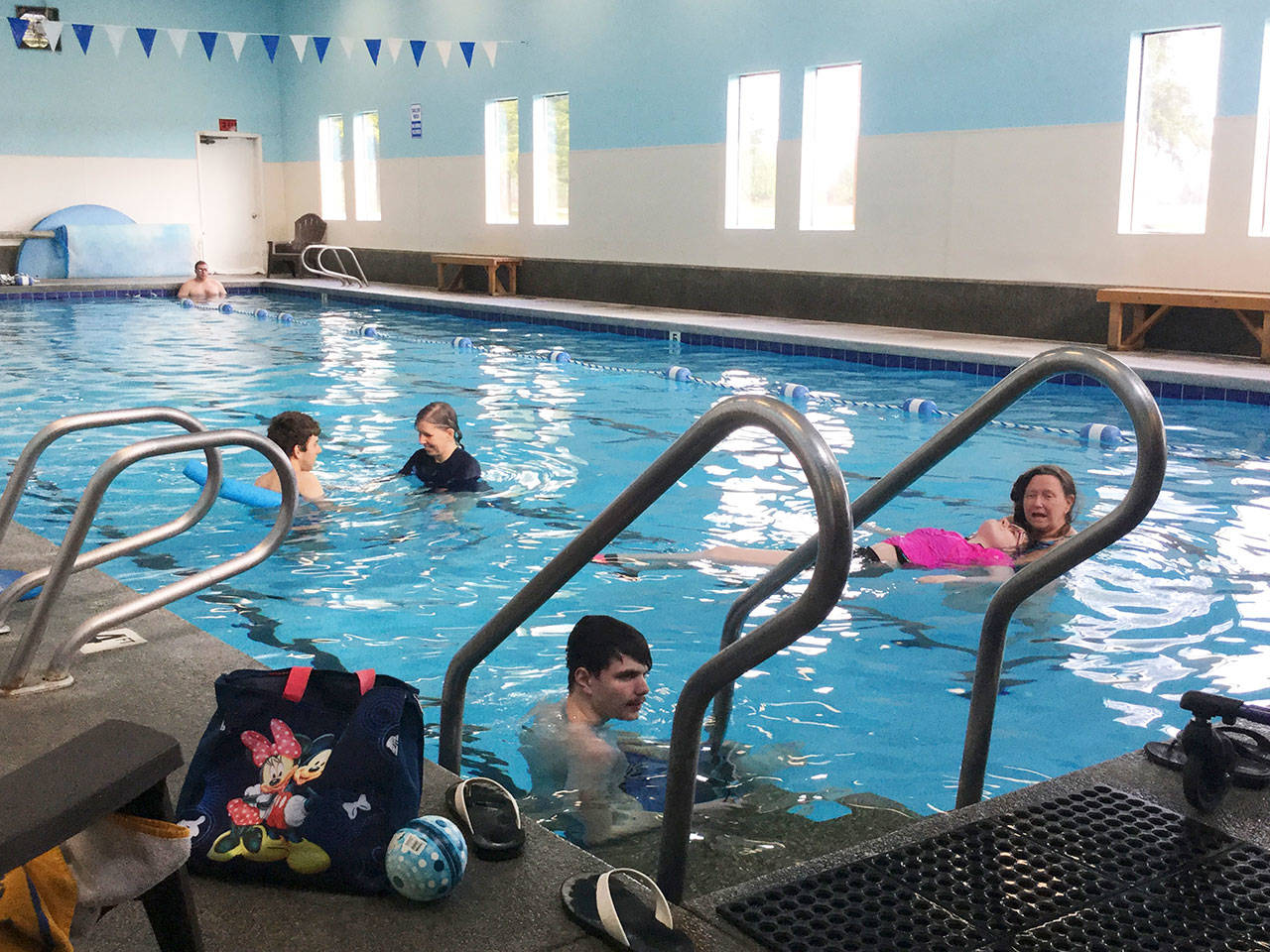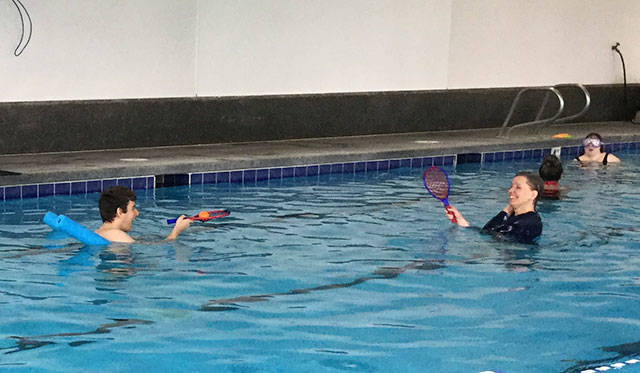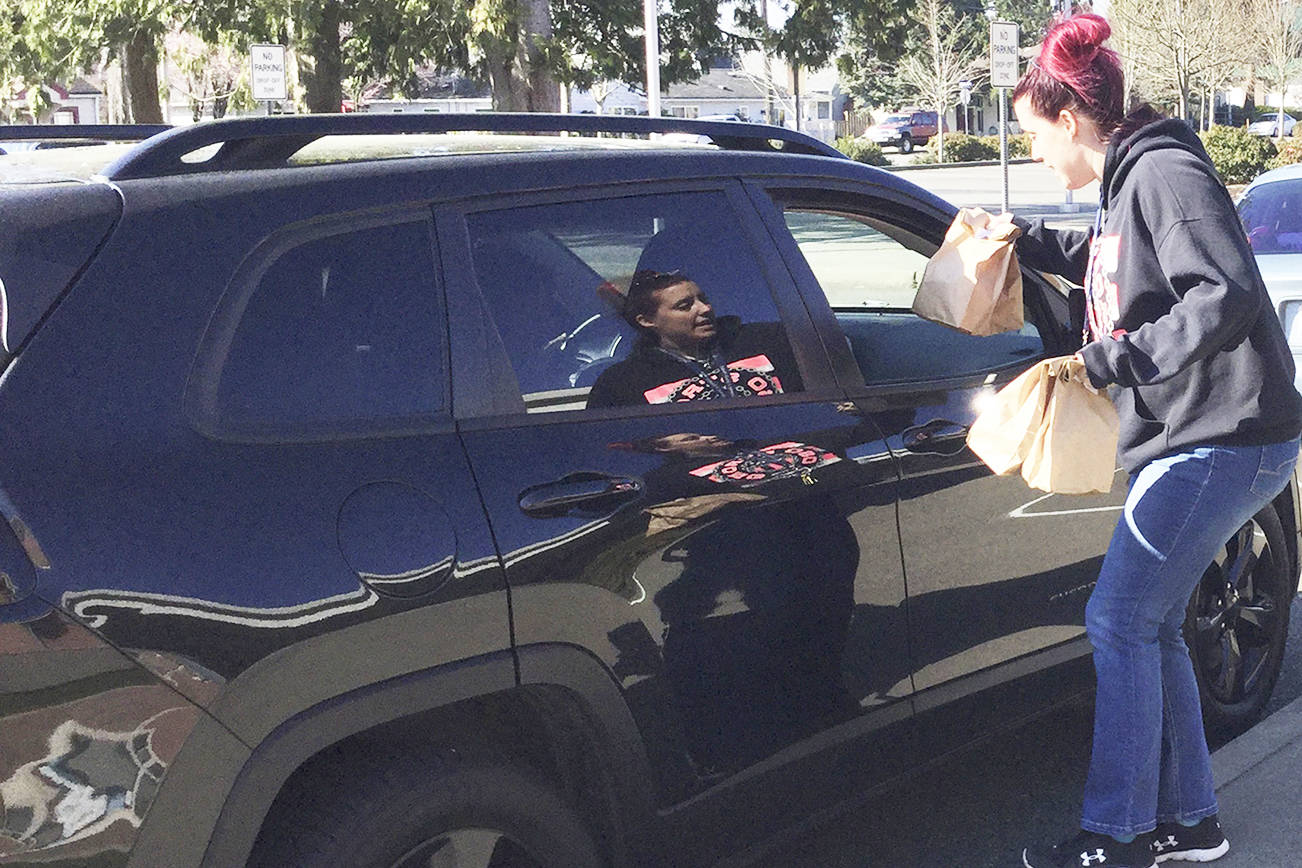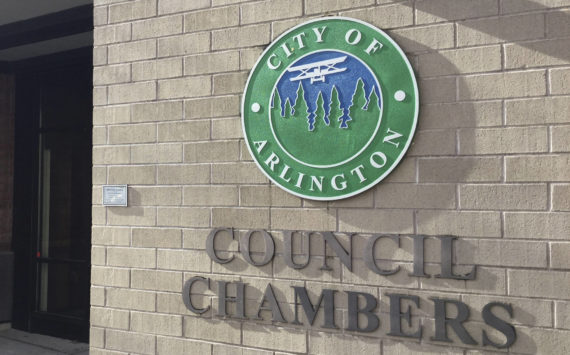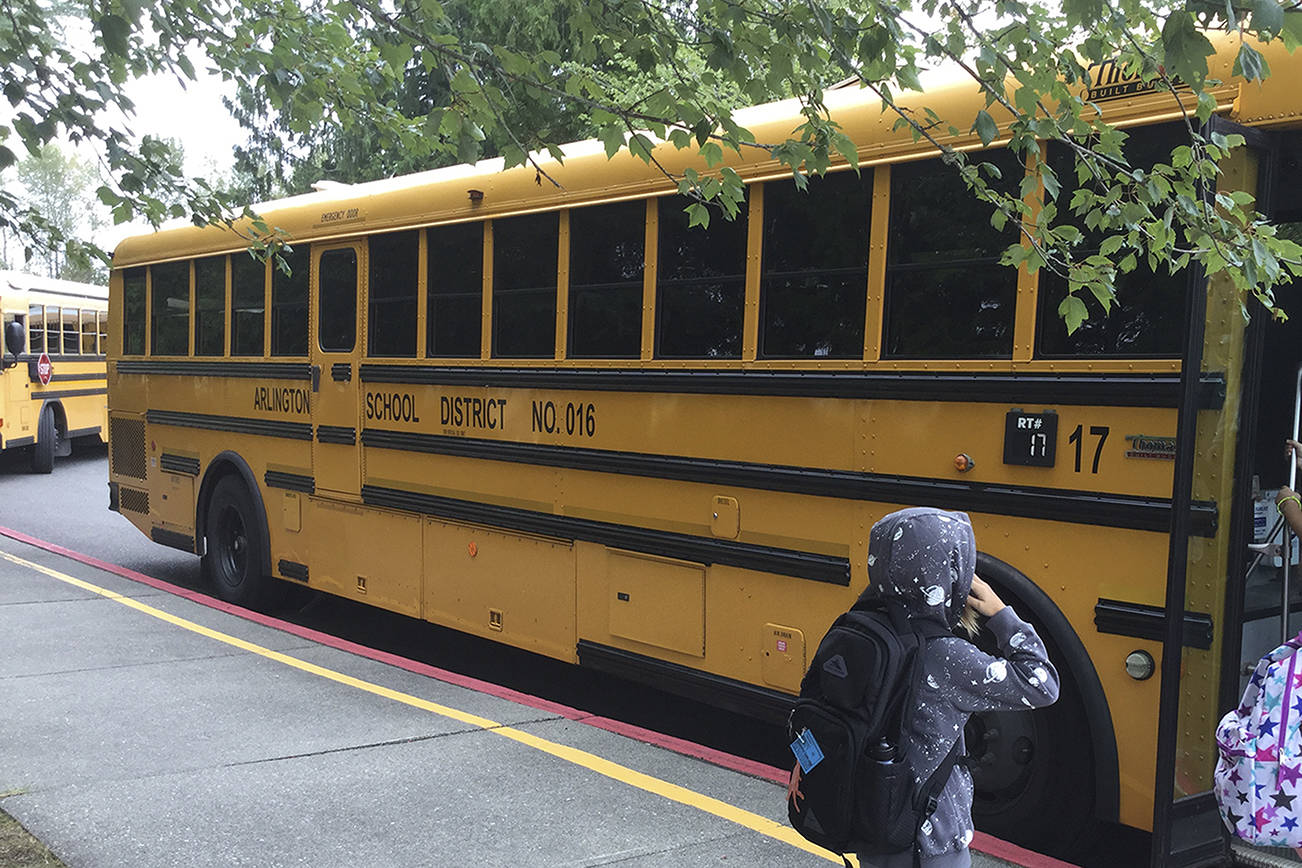ARLINGTON – Arlington Public Schools may have found the formula to take its school-to-work transition program for special needs students to the next level.
Just add water.
The program that prepares the 18- to 21-year-old students for independent life after high school started weekly visits to the Stillaguamish Athletic Club pool. The program tested the waters for one day last year to see if the visits would be embraced by students and parents. They decided to dive in this school year.
Cheryl Burkhead, the district’s transition instructor in Special Education, said it has been great working with athletic club staff “for the opportunity and the ability to support that piece (of learning) that’s physical activity and water safety.”
Typically, the students arrive late Tuesday mornings eager for a dip in the pool or jacuzzi, where they are met by Burkhead and physical therapists who know how to get the most out of time in water. That means enjoying the sensation of being in the pool, physical exercise ,and working weak muscles, and moving around, playing and socializing just like everyone else.
Flotation devices, paddle ball games, pool noodles, collars, bar floats and other equipment are available.
Burkhead saw the value of aquatic therapy at other schools and organizations where she worked. At a Cerebral Palsy center, for example, they found that students with altered depth perception had balance issues, so they focused on that. Also, every autism program she has worked in has water activities. The benefits of water therapy for people with disabilities are well-documented, Burkhead said.
“You aren’t fighting gravity, which allows them to stretch their joints and muscles more easily,” she said, adding they help about a dozen students. “When the students can get their heads underwater and all that auditory sensory stuff decreases, it’s more soothing.”
One student, Rhyann Morgan, 20, wouldn’t miss it for the world, said her mother Rhonda. “She bounces out of bed on swim days.”
Rhyann was born with Joubert syndrome, a rare genetic disorder that affects the area of the brain that controls balance and coordination. She uses a walker or wheelchair on land but in the pool, all that changes when she becomes weightless.
“She enjoys floating on her back; it’s calming, relaxing,” Morgan said. “She’s proud of herself being in the water just like anybody else.”
Don’t mistake her limited mobility as inaction, though. Morgan said her daughter is on the high functioning side of the scale, uses a communication device on her iPad to talk to others, enjoys high school dances, volunteers at the library and has a quirky, slapstick sense of humor.
Water safety
Burkhead said addressing water safety with students is important, too, especially living in the Pacific Northwest with its saltwater, lakes and rivers.
“If you’re not familiar with what your capabilities are, or you have a sort of panicked reaction if you were to fall in or get in, you put yourself at greater risk,” she said.
Aquatic director Kathy Rodriguez has done medical research in water safety. She and the club were enthusiastic about making time for the transition program.
“This is a wonderful way to afford these students some familiarity with water, as well as the social aspect,” Rodriguez said. “They learn to take instruction, how to manage themselves in an environment that, while safe, still has points where they have to be vigilant and thoughtful with each other, and tend to each other’s needs.”
She said the outings also help the students with personal hygiene, such as dressing themselves, showering and working on regular routines, encouraging students while supporting what families are doing at home.
Out of the pool
Pool visits are an extra-curricular activity for the students, who spend ample time in the classroom learning life and job skills that will help them live independently, find employment and become involved in the community.
The transition program moved from Arlington High School to a house on the campus of the district’s Support Services building. The students are able to practice cooking, cleaning, housekeeping, managing money, hygiene tips and other life skills.
The location is also near a bus route that expands their access to employers and volunteer opportunities, of which there are many.
When young adults turn 21, services offered through the school district end for students with special needs.
The transition program fills the gap, connecting the young adults with local businesses and eventually jobs.
“Things like following job routines, and the soft skills like not being afraid to ask for help from bosses or co-workers,” Burkhead said.
Burkhead received a grant for animation software that helps students create video resumes at work and performing volunteer tasks.
“The students can’t always interview for a job, but if they have a thumb drive or DVD that documents what they’ve done – how they’ve done it successfully – that increases employability,” she siad.
There are several ways students contribute to the community.
The students visit NOAH animal rescue in Stanwood four days a week. They help with garbage and recycling, laundry and socialize with the animals, mostly cats. Since their schedule runs midday, “They also learn the joys of a lunch break, eat quickly, then start back to work,” Burkhead said.
The students also help with parcel sorting, boxing and repackaging for Bowman Medical Products, slap promotional labels on water bottles for Dwayne Lane Chevrolet and fold clothes, bundle socks and sort laundry for the school district.
Burkhead said: “We’re always looking for ways for them to interact with the community, ask questions and engage with others.
Periodically, they take meals to Friendship House in Mount Vernon, which has a commercial kitchen. A few students have become interested in working in kitchens, as well as running commercial dishwashers.
Costco in Lakewood has been another supporter where employees have developed relationships with the assisting students and made them a part of the team. They help clerks at the busy checkout lines, are on a first-name basis with many employees, and they also use the visits to practice shopping, buy and order food in the food court.
“The students are coming in and completely doing all the routines with full independence,” Burkhead said.
